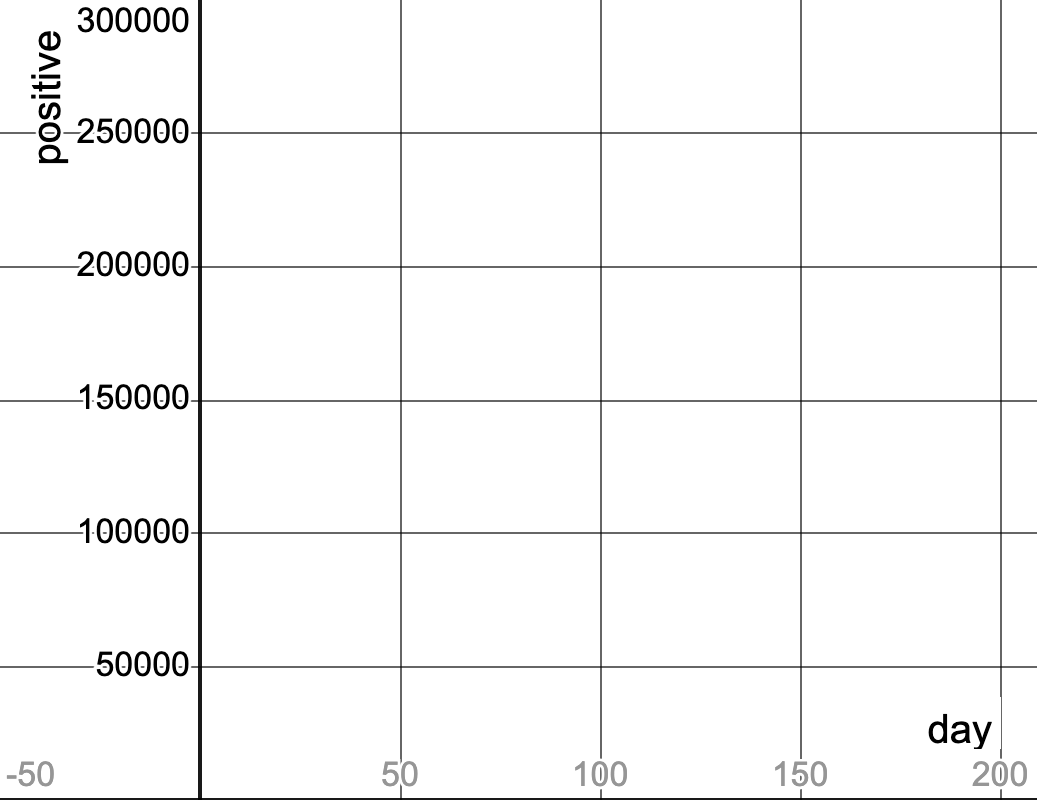For this page, you’ll need to have the Covid Spread Starter File open on your computer. If you haven’t already, select Save a Copy from the "File" menu to make a copy of the file that’s just for you.
1 Take a look at the Definitions Area and find the "Notes on Columns". What is the start date for the data in this table?
2 Click "Run", and evaluate covid-table in the Interactions Area. What do you notice?
3 Evaluate MA1 in the Interactions Area. What does it return?
4 Evaluate CT1. What information do you learn?
5 Evaluate NH1. Why is it "unbound" and how could we make it work?
6 Define three new Rows called NH1, RI1 and VT1, for New Hampshire, Rhode Island and Vermont. Click "Run" and test them out.
a. How many people in Vermont had tested positive by June 10th, 2020?
b. How many people in New Hampshire tested positive by June 10th, 2020?
c. How many people in Rhode Island tested positive by June 10th, 2020?
7 In Pyret, make a scatter plot showing the relationship between day and positive, using state as your labels, then sketch the resulting scatter plot below.
|
8 In which state did the number of cases grow fastest?
9 In which state did the number of cases grow slowest?
10 Are these strong or weak relationship(s)?
|
11 What do you Notice?
12 What do you Wonder?
These materials were developed partly through support of the National Science Foundation, (awards 1042210, 1535276, 1648684, 1738598, 2031479, and 1501927).  Bootstrap by the Bootstrap Community is licensed under a Creative Commons 4.0 Unported License. This license does not grant permission to run training or professional development. Offering training or professional development with materials substantially derived from Bootstrap must be approved in writing by a Bootstrap Director. Permissions beyond the scope of this license, such as to run training, may be available by contacting contact@BootstrapWorld.org.
Bootstrap by the Bootstrap Community is licensed under a Creative Commons 4.0 Unported License. This license does not grant permission to run training or professional development. Offering training or professional development with materials substantially derived from Bootstrap must be approved in writing by a Bootstrap Director. Permissions beyond the scope of this license, such as to run training, may be available by contacting contact@BootstrapWorld.org.
